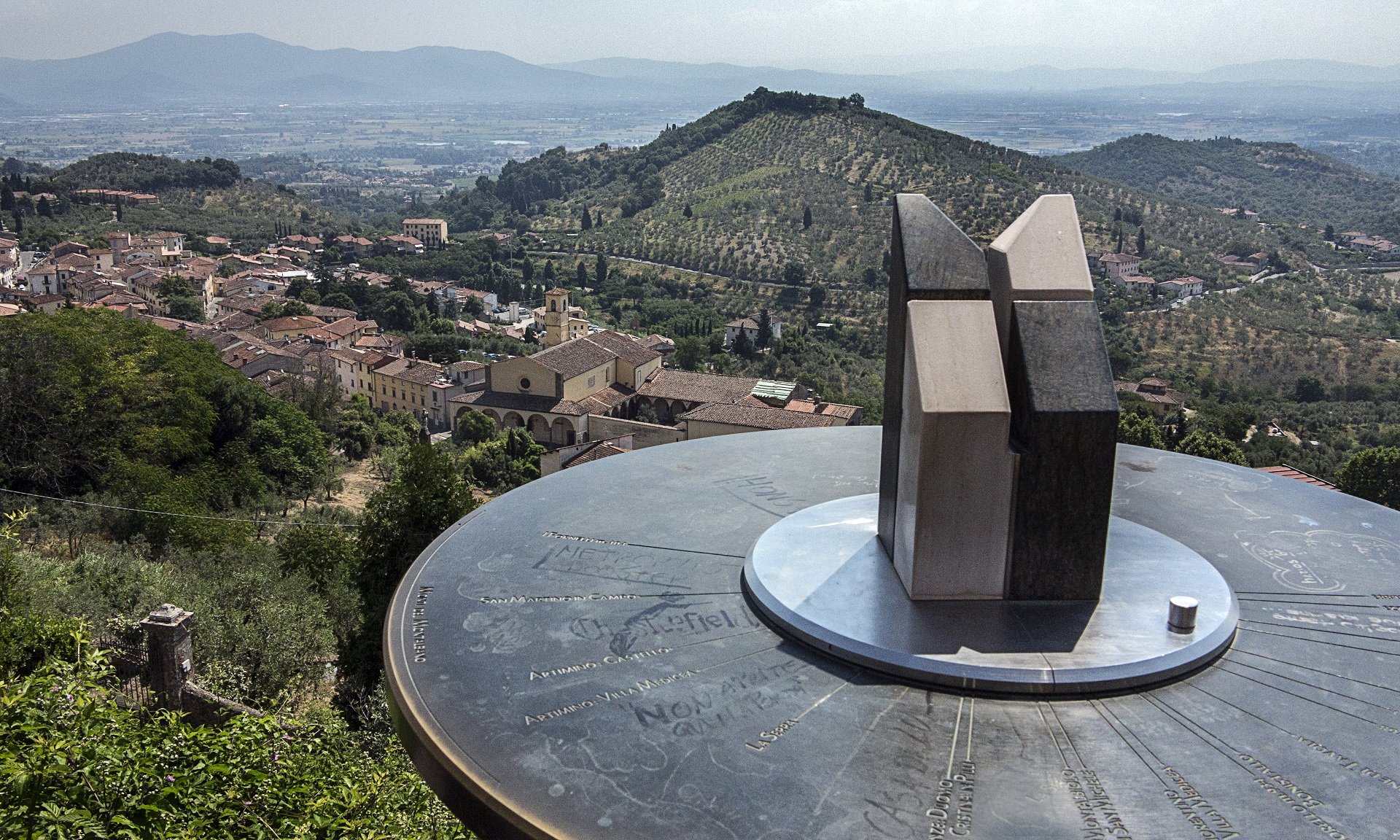La Magia Medici Villa
The Medici Villa "La Magia" is like a precious pearl set in the green of a beautiful protected area: it represents a skilful connection between the work of nature and the work of man.
Built on a hill, in the northern slopes of Montalbano, it stands along the old road that connected Pistoia to Florence, a short distance from the oldest part of the town of Quarrata.
The original settlement of the Villa dates back to 1320, the year in which Vinciguerra Panciatichi built the first tower with a defensive function for the struggles between his family and the Cancellieri family. The toponym 'La Magia' was already used in the mid-13th century and is the name with which it will later be called the same residence.
The medieval building, which coincides with the western part of the Villa in correspondence with the wall structures subsequently used as a dovecote, was transformed during the 15th century into a sumptuous country residence, thanks to the new quadrangular layout, with a courtyard in the centre and two diagonally opposite foreparts protruding from the external perimeter line.
Francesco I de 'Medici came into possession of the entire estate of "La Magia" between 1583 and 1584. With this purchase the Grand Duke, continuing the paternal plan of territorial expansion, strengthened the family domination in the Montalbano area where, since the time of Lorenzo the Magnificent, the Medici had undertaken the establishment of a compact complex of land possessions.
Shortly after purchasing Villa la Magia, Francesco I commissioned its renovation to the court architect Bernardo Buonalenti, to whom he also ordered to design an artificial lake.
The residence remained the property of the main branch of the Medici family until 1645, when it was sold by Ferdinando II to Pandolfo Attavanti, member of an ancient noble family, native of Castelfiorentino.
For the historical and artistic events of Villa La Magia, the most relevant personality was one of Pandolfo's sons, General Amerigo Attavanti, since 1688 an active administrator of the family's properties: he was the one who commissioned the great transformations that, between the end of the 17th century and the first decades of the 18th century gave a new order to the interior of the building, without substantially changing its external appearance.
Inside the Villa was completely transformed in elegant Baroque style, with the construction of the monumental staircase and the creation of rich fresco and stucco decorations. The construction site of Villa La Magia in the early 18th century saw the presence of numerous artistic personalities of the time. Among these the Florentine painter Giovanni Bagnoli author in 1710 of the fresco on the staircase background and of the Rape of Europe on the vault of the room in front of the hall. Always thanks to the Attavanti, the west lemon house was built and the space in front of it was arranged.
The current layout of the garden is due to Giulio Giuseppe Amati, who purchased the entire property in 1766. In the nineties of the 18th century, the nobleman from Pistoia had the eastern lemon house built. The English garden, on the eastern side of the Villa, and the reconstruction of the neo-Gothic noble chapel are also due to Amati. The last descendant of the Amati family, Tommaso, named his heir Giulio Amati Cellesi (1863) with the obligation to assume the double surname. The residence then became the property of the grandchildren of Giulio Amati Cellesi (Giuliana, Gualtiero, Luciano, Amerigo, Tebaldo and Lanfredino), children of the eldest son Giovanni Tommaso born from the marriage with Eugenia Mattei.
Since January 2000 the Municipality of Quarrata is the owner of the architectural complex of Villa La Magia. Since 2013 the villa has been declared a World Heritage Site by UNESCO and it can be visited by reservation (see how).
Beside the visit of the monumental complex of the Villa and the exhibition "A thread between art and craftsmanship", dedicated to the work of filet, and the rooms with the works of Agenore and Alfredo Fabbri, it is possible to visit the garden and the Collection of Contemporary Art "The spirit of the place" with works by Fabrizio Corneli, Anne and Patrick Poirier, Nagasawa, Marco Bagnoli, Maurizio Nannucci, Daniel Buren and Massimo Biagi and the Wood of Magia, recognized as a Protected Natural Area of local interest (ANPIL) in 2005 for its peculiar characteristics of flora and fauna maintained over the centuries.
Information
Address: via Vecchia Fiorentina I tronco 63, Quarrata
Web site: www.villalamagia.com
E-mail address: info@villalamagia.com
Phone: 0573 774500
GPX coordinates: 43.8536876332,10.9740579154














